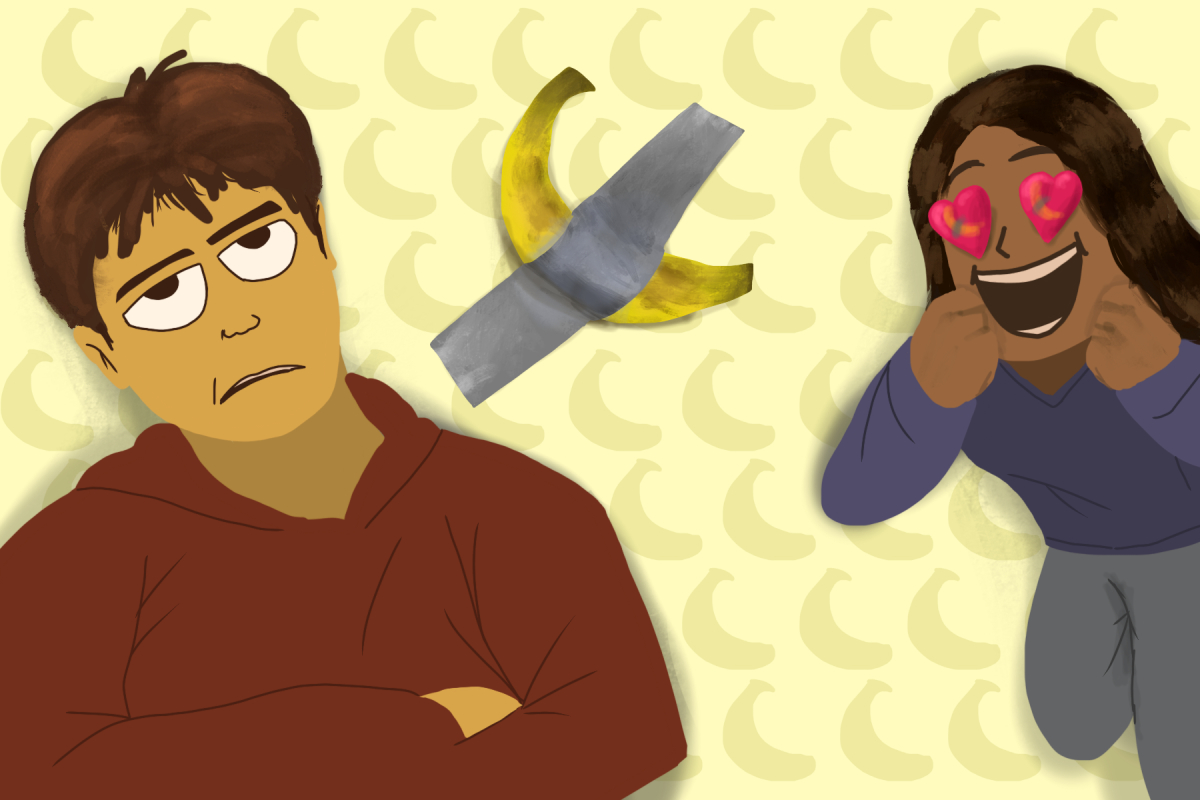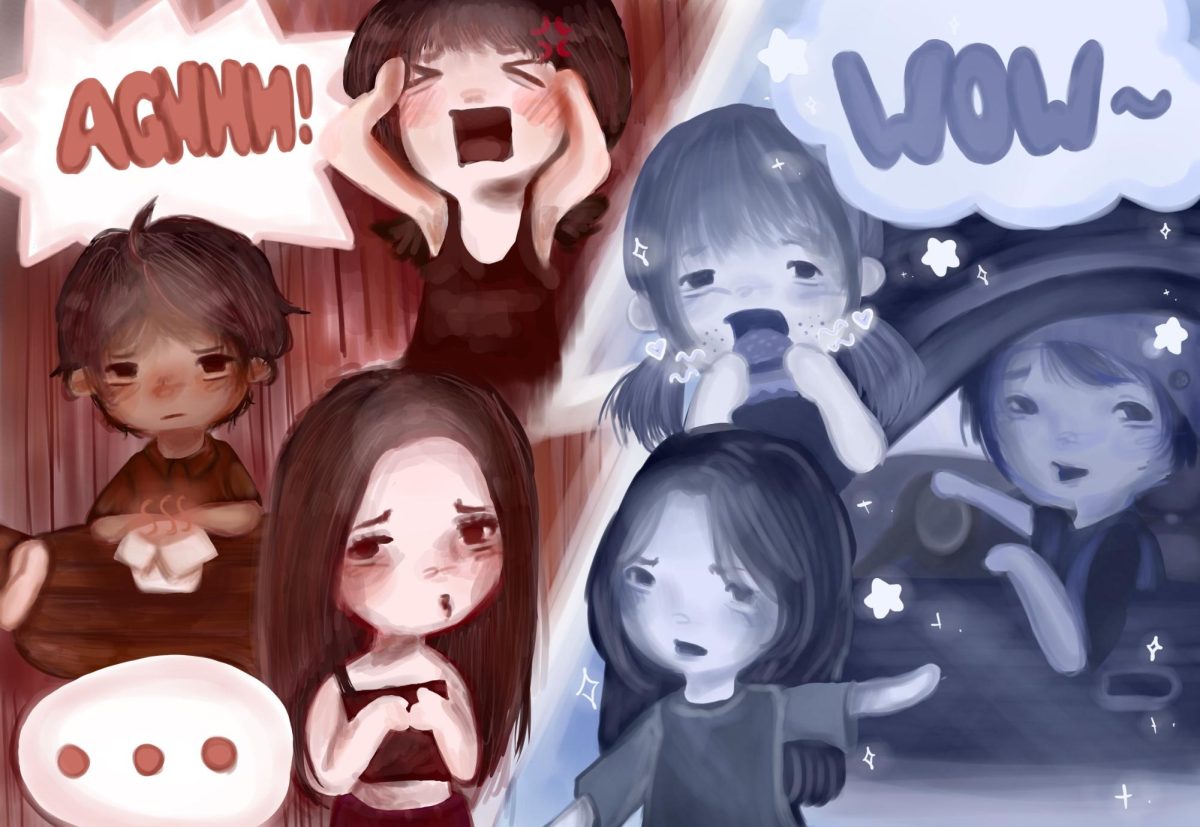This is Spitfire, a style of head-to-head debates between The Accolade’s two Opinion editors. Kayden is green. Aashna is orange.
PREVIOUSLY ON SPITFIRE: The two Opinion editors went head-to-head about the better form of entertainment. Aashna, the winner and now-defending champion, fought for TV shows and series, while Kayden argued for the sanctity of cinema. Will Kayden take the crown this time around? One thing’s for sure: they’re both about to spit FIRE.
Here are the rules:
- No profanity.
- An editor attacked by the other will be given three sentences to respond.
- The readers will decide who wins through a poll at the end of the article.
- Once a rule is broken, the debate ends.
A few years ago, a banana duct-taped onto a wall went viral for its “creativity,” and a few years before that, a student placed a pineapple on a bench and people praised it as art. I can’t understand what in the world would make someone commend something as meaningless as conceptual art – what is creativity if not an expression of life’s joys, struggles and problems? Putting more emphasis on the creation than the work itself is useless, especially when it’s just a fruit on a wall or table.
Beauty lies in the eye of the beholder, and conceptual art addresses just that through its primary term: conceptual. Only the viewer possesses the ability to decide how the art makes them feel, making it completely open to interpretation, emphasizing that both right and wrong cease to exist when it comes to artwork. I know, you probably don’t think that a banana taped to the wall, or Comedian by Maurizio Cattelan, is anywhere worth $6 million, but it truly shows the creativity in something so simple, meaning so much.
How is a banana worth several millions? There never was any “creativity” – whereas it took Leonardo Da Vinci several years to create the Mona Lisa, modern conceptual pieces don’t have the artists’ heartfelt meaning poured into it, even connecting this argument to the whole controversy with artificial intelligence [AI] art! All the meaning behind paintings disappears when it’s done with robots who don’t put in their emotions since they don’t have any. Even the banana taped to a wall that you so love agrees with me.
Kayden, the beauty of Comedian comes through the idea of impermanence; once the banana on the wall goes bad, they replace it with another, emphasizing that nothing lasts forever. This “anyone can do that” mentality makes it all the more relatable. When people take inspiration and create something similar, it becomes a topic of conversation and maybe even a newfound interest.
Again, that’s the whole argument for AI. Art is meaningful not because it’s easy for anyone to do, but because it reflects the creator’s unique life, struggles and intentions to resonate with observers on a deeply personal level –– even if there is a deeper meaning, the Comedian simply satirizes the meaninglessness behind modern conceptual art and its creation, proving my point. Like AI, conceptual art like “oh haha I put a banana on a wall” has no real purpose behind it, so while it can evoke humorous reactions or come off as something “anyone can do,” relatability serves completely no importance in art.
Art is meaningful because it allows people to look within themselves and create their own image of what the project means to them. In the end, an intricate project may not “evoke” as much emotion as a piece open to interpretation because only the individual can judge. Whether you decide that Vincent van Gogh’s Starry Night is more your cup of tea, or Maurizio Cattelan’s Comedian is more your cup of…fruit, at the end of the day, art is art. Just because one may not be as intricate as the other, does not mean that we should discount the influence it holds – sometimes, simplicity beats complexity.

















